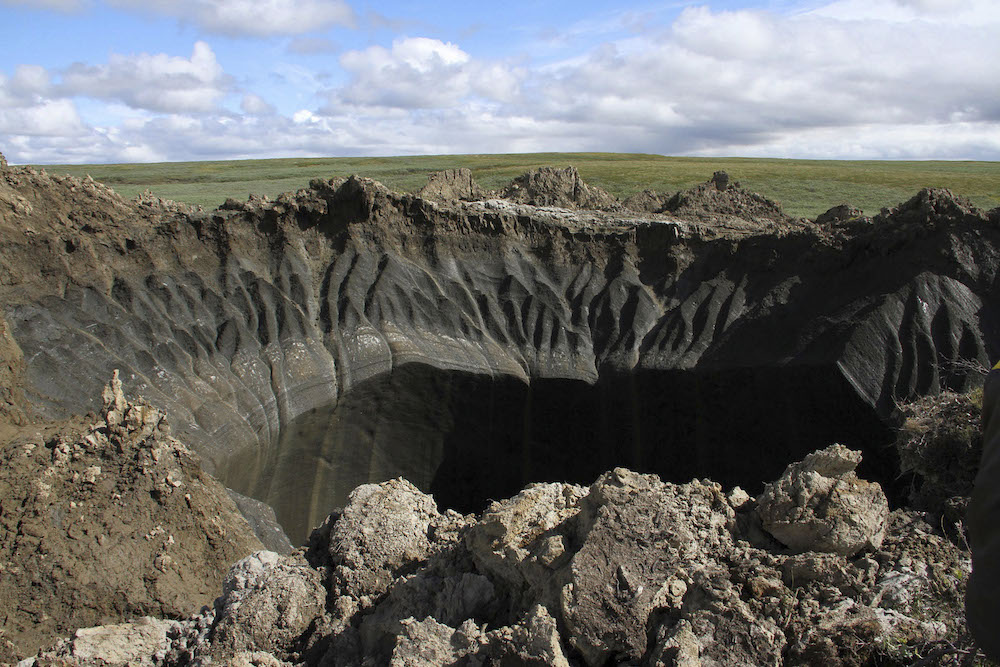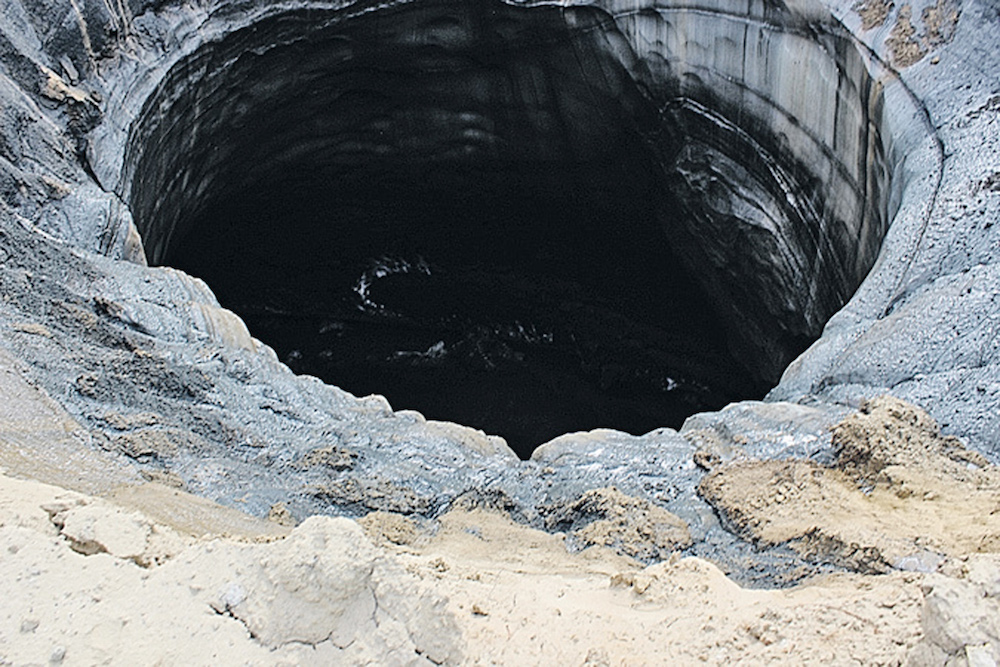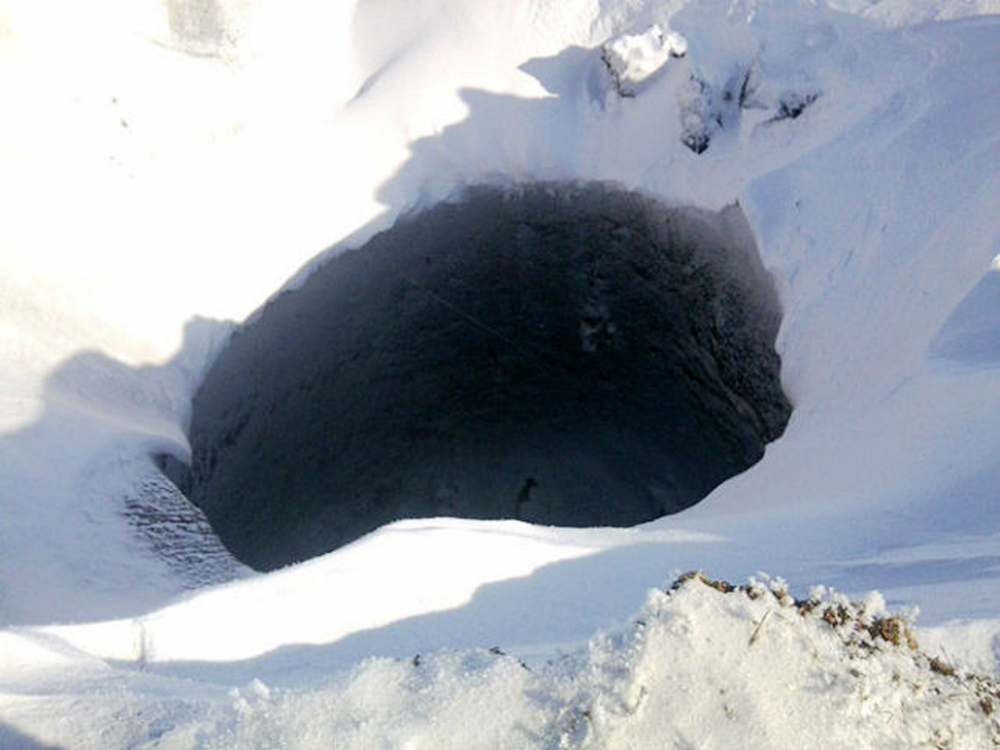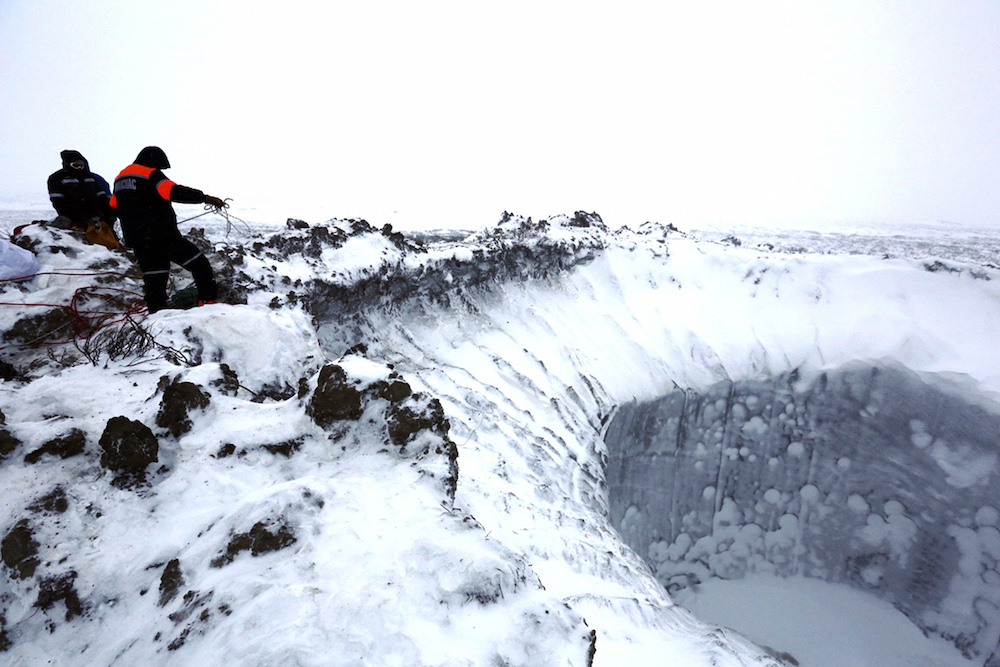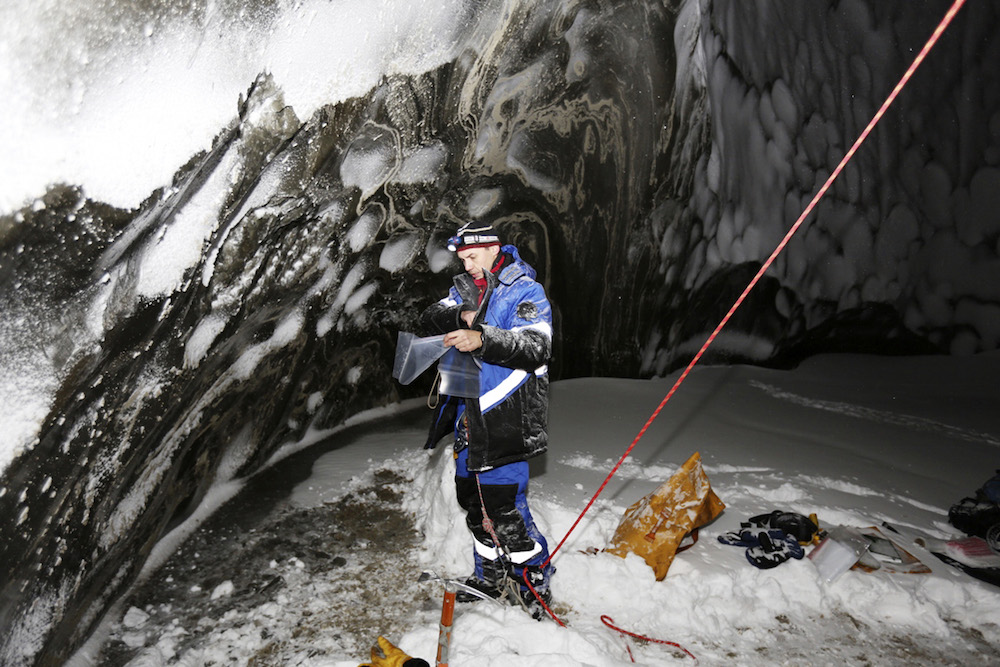Photos of Siberia's Mysterious Craters
Seven giant craters have mysteriously appeared in northern Siberia, possibly due to methane gas released from melting permafrost. Check out these jaw-dropping photos of the strange geological structures. [Read full story about the Siberian craters]
This crater, in the Yamal Peninsula, was discovered in 2014 by helicopter pilots 19 miles (30 kilometers) from Bovanenkovo, a major gas field in the Yamalo-Nenets autonomous district. (Image credit: Marya Zulinova/The Siberian Times)
Four Arctic craters can be seen in this satellite image: B1, the famous Yamal hole located 19 miles (30 kilometers) from Bovanenkovo; B2, the recently discovered crater located 6.2 miles (10 km) south of Bovanenkovo; B3, a crater located 56 miles (90 km) from Antipayuta village; and B4, a crater located near Nosok village, north of the Krasnoyarsk region near Taymyr Peninsula. (Image credit:Vasily Bogoyavlensky)
Satellite image of the site before the formation of the Yamal hole (B1). K1 and the red outline show the hillock formed before the emission of methane gas. Yellow outlines show potentially dangerous areas where gas could erupt. (Image credit: Marya Zulinova/The Siberian Times)
Satellite images showing a mound of Earth before the gas emission that formed crater B2 (top). Lakes formed at a couple of the craters, and more than 20 smaller craters were found nearby (bottom). (Image credit: Marya Zulinova/The Siberian Times)
The Yamal lake showing signs of gas emission. (Image credit: Marya Zulinova/The Siberian Times)
Crater B3, located 56 miles (90 km) from Antipayuta village, Yamal district (top). Crater B4, located near Nosok village, north of the Krasnoyarsk region, near Taymyr Peninsula. (Image credit: local residents/The Siberian Times)
Get the world’s most fascinating discoveries delivered straight to your inbox.
The ring of soil around these craters suggests an underground explosion. (Image credit: Vasily Bogoyavlensky/The Siberian Times)
The Russian Center of Arctic Exploration embarked on an expedition to Yamal crater in early November 2014. The researchers were the first in the world to climb down into the crater. (Image credit: Vladimir Pushkarev/The Siberian Times)
Follow Tanya Lewis on Twitter. Follow us @livescience, Facebook & Google+.



